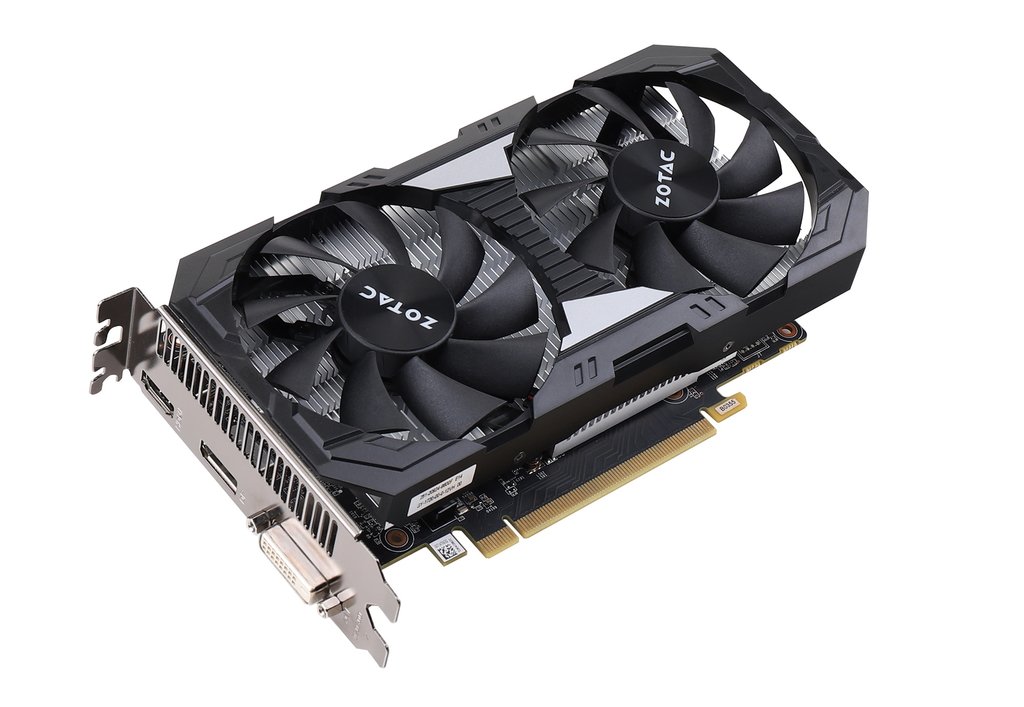
Chinese news outlet Expreview has reviewed Nvidia's refreshed GeForce GTX 1650 gaming graphics card. The new GTX 1650 has GDDR6 memory for a speed boost over the original version with GDDR5.
The sample tested, the Zotac GeForce GTX 1650 GDDR6 Destroyer OC, is a SKU that's specific to China. The graphics card's teardown shows that the revised version is still using the same TU117 silicon that debuted with the original GTX 1650. This means that it continues to feature 896 CUDA cores and 4GB of memory.
The memory is the most obvious upgrade. The original GTX 1650 leverages 8 Gbps GDDR5 memory to offer 128 GBps of memory bandwidth. The latest revision flexes 12 GBps GDDR6 memory and is good for up to 192 GBps of memory bandwidth. The upgrade is equivalent to a 50% increase.
It appears that the GTX 1650 GDDR6 is hiding another surprise under its hood. Expreview noticed that Zotac's GDDR6 model comes with slightly lower clock speeds. The GTX 1650 Destroyer OC has a 1,485 MHz base clock and 1,665 MHz boost clock, while the GTX 1650 GDDR6 Destroyer OC has a 1,410 MHz base clock and 1,620 MHz boost clock. That's equivalent to a 5% reduction on the base clock and 2.7% on the boost clock.
The GTX 1650 GDDR6 continues to operate within the 75W envelope. It's uncertain Nvidia if told its partners to lower the clock speeds to maintain the same TDP or to gimp the graphics card's performance.
GTX 1650 GDDR6 Benchmarks
Expreview's testbed consist of an Intel Core i5-9600K processor, MSI Z370 Gaming Pro Carbon motherboard and 16GB (2x8GB) of G.Skill's Trident Z Neo DDR4-3200 memory with 16-16-16-36 CAS latency timings.
The Chinese publication pitted the Zotac GeForce GTX 1650 GDDR6 Destroyer OC against the Gigabyte GeForce GTX 1650 Gaming OC. Gigabyte's card comes with a 1,485 MHz base clock and 1,815 MHz boost clock, which is 5% and 12% higher, respectively, than Zotac's.
Get Tom's Hardware's best news and in-depth reviews, straight to your inbox.
On the software side, Expreview used Windows 10 with the November 2019 update (version 1909) and the Nvidia GeForce 445.75 WHQL Game Ready driver. Since the GTX 1650 is aimed at 1080p gamers Expreview ran all tests at 1920 x 1080 resolution.
It ran the majority of the games on the highest quality preset available, except for Metro Exodus, Hitman 2 and Wolfenstein: Youngblood, which were configured to ultra, high and super high, respectively.
| Benchmark | Gigabyte GeForce GTX 1650 Gaming OC | Zotac GeForce GTX 1650 GDDR6 Destroyer OC | Performance Difference |
|---|---|---|---|
| Fire Strike | 9,664 | 10,507 | 8.7% |
| Fire Strike Extreme | 4,236 | 4,538 | 7.1% |
| Time Spy | 3,548 | 3,751 | 5.7% |
| Assassin's Creed Odyssey | 32 | 36 | 12.5% |
| Shadow of the Tomb Raider | 48 | 52 | 8.3% |
| Metro Exodus | 28.01 | 29.67 | 5.9% |
| Far Cry 5 | 57 | 59 | 3.5% |
| Grand Theft Auto V | 89.6 | 99.3 | 10.8% |
| Borderlands 3 | 28.88 | 29.73 | 2.9% |
| Hitman 2 | 49.48 | 50.45 | 2% |
| Wolfenstein: Youngblood | 66 | 68 | 3% |
The GTX 1650 GDDR6 delivered about 2-12.5% performance gains over the GDDR5 version, depending on the benchmark and game. Collectively, we're looking at an average performance increase of 6.4%, based on Expreview's results.
The power consumption tests show the GDDR6 variant drawing slightly less power than the original. At idle, both models consumed about 9W. Average consumption on the GDDR6 version was 76W, while the GDDR5 version pulled around 83W. The lower power draw can be attributed to the fact that Zotac's GeForce GTX 1650 GDDR6 Destroyer OC has lower clock speeds compared to Gigabyte's heavily overclocked GTX 1650 Gaming OC.
GTX 1650 GDDR6 Price
The GTX 1650 GDDR6 could come with a similar price tag as the GDDR5 version, but ultimately it'll vary from brand to brand. In MSI's case, its GTX 1650 Gaming X GDDR5 is selling for $159.99, and the MSI GeForce GTX 1650 D6 Gaming X GDDR6 is at the same price.
The two Newegg postings also confirm Expreview's finding in the GDDR6 featuring lower clock speeds. The clock speed reduction is higher on MSI's offerings. MSI's GTX 1650 Gaming X has a 1,860 MHz boost clock, and its GTX 1650 D6 Gaming X is limited to 1,710 MHz, a decrease of 8%.

Zhiye Liu is a news editor, memory reviewer, and SSD tester at Tom’s Hardware. Although he loves everything that’s hardware, he has a soft spot for CPUs, GPUs, and RAM.
-
King_V Definitely interesting, and an improvement if they're getting a little more performance out of a little less power consumption.Reply
Still, the (admittedly far more power hungry) RX 570 is the target this really has to beat. If it only manages a tie, but costs more, it still is a bit of a tough sell. I'm not quite sure if it manages a tie, though. Maybe close?
It'll be interesting to see when official benchmarks come out - and probably worthwhile to compare it to both the 4GB and 8GB versions of the RX570.